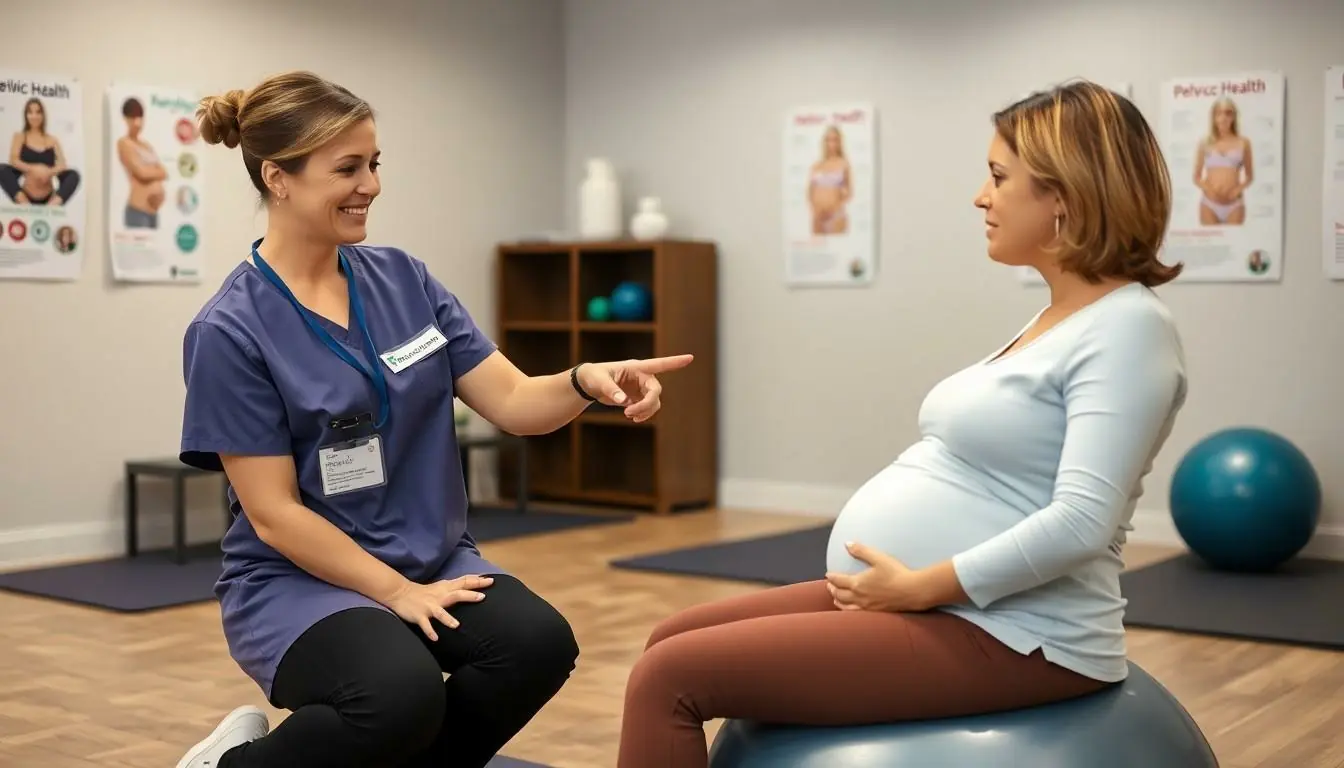Table of Contents
ToggleIn the world of health and wellness, pelvic health often gets the short end of the stick—like the forgotten vegetable in the back of the fridge. But in the Rio Grande Valley, pelvic health physical therapy is stepping into the spotlight, ready to transform lives one session at a time. It’s not just about alleviating discomfort; it’s about empowering individuals to reclaim their confidence and quality of life.
Overview of RGV Pelvic Health Physical Therapy
Pelvic health physical therapy offers specialized care to individuals experiencing pelvic floor dysfunction in the Rio Grande Valley. This therapy focuses on diagnosing, treating, and managing conditions related to the pelvic region. Professionals incorporate various techniques, including manual therapy and exercises, to address issues like incontinence, pain during intercourse, and pelvic organ prolapse.
Specific populations benefit greatly from these services. Pregnant individuals sometimes experience pelvic pain, which can disrupt daily life. Postpartum recovery also includes pelvic health therapy to strengthen muscles and improve overall function. Furthermore, individuals dealing with chronic pain conditions find relief through targeted interventions tailored to their needs.
Education plays a crucial role in RGV pelvic health physical therapy. Patients receive guidance on anatomy and function, empowering them with knowledge about their bodies. Understanding contributes to improved adherence to treatment plans and enhances outcomes. Workshops and community outreach programs support awareness and destigmatization of pelvic health issues, creating a more informed public.
Therapists utilize evidence-based practices to ensure quality care. Tools like biofeedback and pelvic floor muscle training help track progress and adjust treatment as needed. Patient-centered approaches emphasize individual goals, fostering a supportive environment throughout the recovery process. Local clinics often partner with healthcare providers to create comprehensive care plans for optimal results.
RGV pelvic health physical therapy addresses diverse conditions with a focus on personalized care and education. As awareness of pelvic health grows, more individuals seek these services, leading to significant improvements in their quality of life.
Importance of Pelvic Health

Pelvic health plays a crucial role in overall wellness, impacting various bodily functions and quality of life. Addressing pelvic health concerns promotes not just physical comfort but also emotional well-being.
Common Issues Addressed
Pelvic health physical therapy tackles several common issues. Individuals often experience incontinence, which can result in significant distress. Pain during intercourse affects many and can lead to decreased intimacy. Pelvic organ prolapse occurs when pelvic organs descend, causing discomfort. These conditions frequently affect pregnant and postpartum individuals, requiring specialized attention. Lower back pain and bladder dysfunction are also prevalent among patients seeking support.
Benefits of Therapy
Therapy offers numerous benefits for those suffering from pelvic health issues. Many experience reduced pain and improved bladder and bowel control. Increased body awareness leads to better self-management of symptoms. Confidence often returns as individuals regain control over their bodies. Specialized education empowers patients to understand their anatomy and function, enhancing treatment effectiveness. Such personalized care significantly improves overall quality of life, making therapy an essential resource.
Techniques Used in RGV Pelvic Health Physical Therapy
Pelvic health physical therapy employs various techniques to address dysfunction. These methods target both physical symptoms and underlying issues.
Manual Therapy
Manual therapy consists of hands-on techniques that promote healing in the pelvic region. Therapists often use myofascial release to ease tension in surrounding muscles. Trigger point therapy helps in reducing pain by focusing on specific tight areas. Joint mobilization techniques improve movement and function in the pelvic area. By utilizing these methods, therapists enhance blood flow and encourage relaxation. Patients frequently experience immediate relief from pelvic pain and discomfort after sessions.
Exercise Regimens
Exercise regimens play a crucial role in pelvic health physical therapy. Therapists design individualized plans tailored to specific patient needs. Kegel exercises strengthen pelvic floor muscles, improving control and reducing incontinence. Resistance training targets supporting muscles in the hips and abdomen, contributing to overall stability. Stretching routines increase flexibility and prevent tension in tight areas. Incorporating these exercises into daily routines empowers patients to take charge of their health. Progressively strengthening the pelvic floor leads to improved symptoms and enhanced quality of life.
Patient Experiences and Testimonials
Individuals who participate in pelvic health physical therapy often share transformative experiences. Many report significant reductions in discomfort after starting their treatment.
Patients frequently express gratitude for the education received during sessions. Understanding the anatomy empowers individuals to make informed decisions about their health.
One patient noted that after just a few sessions, symptoms of incontinence improved markedly. Another individual shared how therapy helped alleviate pelvic pain during intercourse, drastically improving their intimate relationships.
Therapists prioritize personalized care, leading to tailored interventions that address specific needs. Patients often highlight the progress tracked through biofeedback, noting increased engagement in their recovery process.
Group workshops also play a pivotal role in the therapy experience. Participants discuss how connecting with others facing similar challenges reduces feelings of isolation. Testimonials indicate that such community support enhances confidence in managing pelvic health issues.
Success stories often underscore the impact of manual therapy techniques, such as myofascial release, on pain management. Sessions involving targeted exercise regimens yield positive feedback, with patients noticing strengthened pelvic floor muscles and improved stability.
Continuous communication with therapists fosters trust and encourages patient involvement in their treatment plans. Many individuals feel more in control of their bodies and symptoms after completing their therapy.
Overall, the feedback from patients demonstrates the profound effect of pelvic health physical therapy on their quality of life and well-being. Each experience adds to the growing body of evidence supporting the importance of specialized care in the Rio Grande Valley.
Future of Pelvic Health Therapy in RGV
Emerging trends in pelvic health therapy indicate a vibrant future in the Rio Grande Valley. Innovations in treatment techniques will enhance patient experiences and outcomes. Increased access to specialized care addresses growing concerns about pelvic health issues among residents. Telehealth options can expand reach, allowing individuals to receive expert guidance from the comfort of their homes.
Advancements in education and community outreach play a pivotal role. Workshops and informational sessions nurture awareness about pelvic health topics and reduce stigma. These initiatives empower individuals to seek help, thereby supporting a proactive approach to wellness. As community awareness increases, more people will engage in preventive measures and proactive management of pelvic floor dysfunctions.
Technological advancements enhance treatment methods. Tools like biofeedback remain critical in personalized assessment and monitoring progress. New applications in pelvic muscle training provide users real-time feedback, improving self-management and adherence to therapy. Enhanced training programs for therapists will ensure they remain updated on the latest practices.
Targeted interventions tailored for specific demographics, such as pregnant and postpartum individuals, signify a shift towards individualized care. Specialized programs can address unique challenges, fostering recovery and empowering patients with knowledge. This personalized approach will bolster overall wellness, contributing to enhanced quality of life.
With a focus on collaboration among healthcare providers, continued integration of pelvic health therapy into general wellness practices is likely. This collaboration can improve referrals and create a more holistic healthcare experience for patients. As the scope of pelvic health therapy evolves, its importance in the overall health landscape of the RGV will become increasingly evident.
Pelvic health physical therapy is becoming an essential part of wellness in the RGV. As more individuals recognize its benefits, they’re empowered to take control of their health and improve their quality of life. The personalized approach offered by therapists not only addresses physical symptoms but also fosters a deeper understanding of pelvic health.
Innovations in treatment techniques and increased community outreach are paving the way for greater awareness and acceptance. By continuing to educate and support individuals, pelvic health therapy can significantly transform lives. The future looks bright as this specialized care becomes more integrated into overall health practices, ensuring that everyone has the opportunity to thrive.




